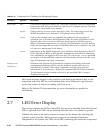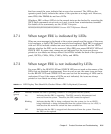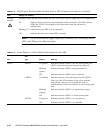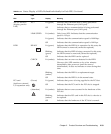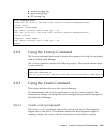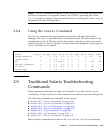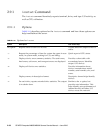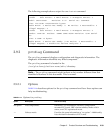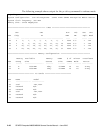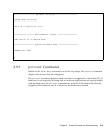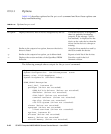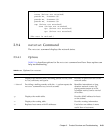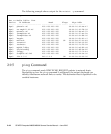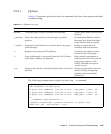
2-38 SPARC Enterprise M8000/M9000 Servers Service Manual • June 2010
2.9.1 iostat Command
The iostat command iteratively reports terminal, drive, and tape I/O activity, as
well as CPU utilization.
2.9.1.1 Options
TABLE 2-13 describes options for the iostat command and how those options can
help troubleshoot the server.
TABLE 2-13 Options for iostat
Option Description How It Can Help
No option Reports status of local I/O devices. A quick three-line output of device
status.
-c Reports the percentage of time the system has spent in user
mode, in system mode, waiting for I/O, and idling.
Quick report of CPU status.
-e Displays device error summary statistics. The total errors,
hard errors, soft errors, and transport errors are displayed.
Provides a short table with
accumulated errors. Identifies
suspect I/O devices.
-E Displays all device error statistics. Provides information about
devices: manufacturer, model
number, serial number, size, and
errors.
-n Displays names in descriptive format. Descriptive format helps identify
devices.
-x For each drive, reports extended drive statistics. The output
is in tabular form.
Similar to the -e option, but
provides rate information. This
helps identify poor performance of
internal devices and other I/O
devices across the network.



